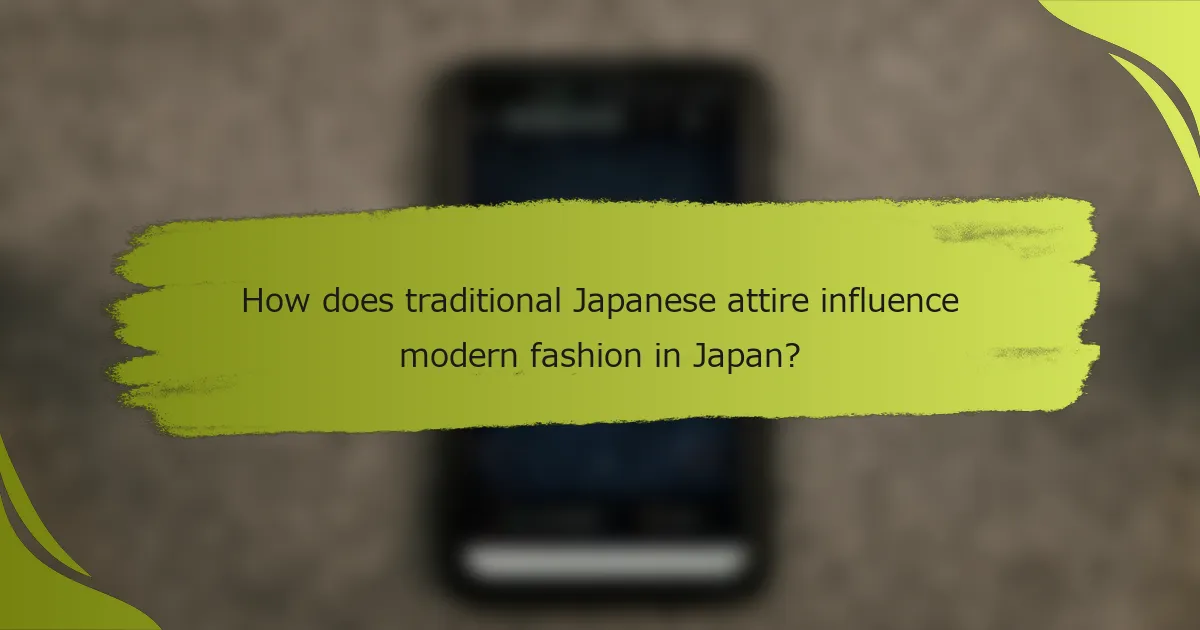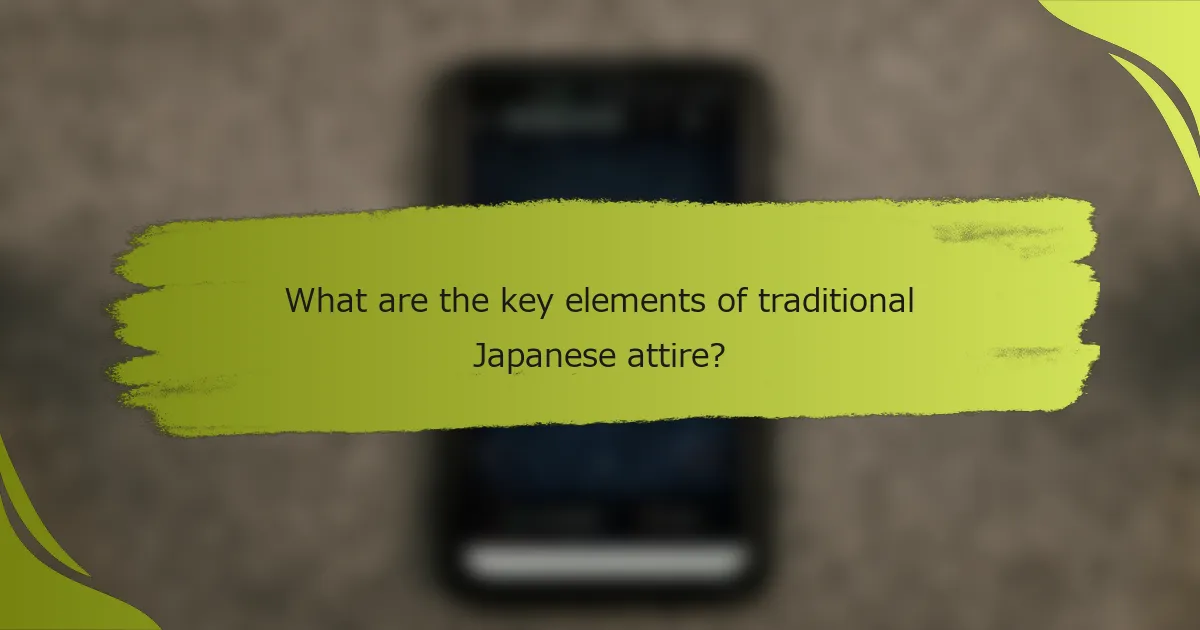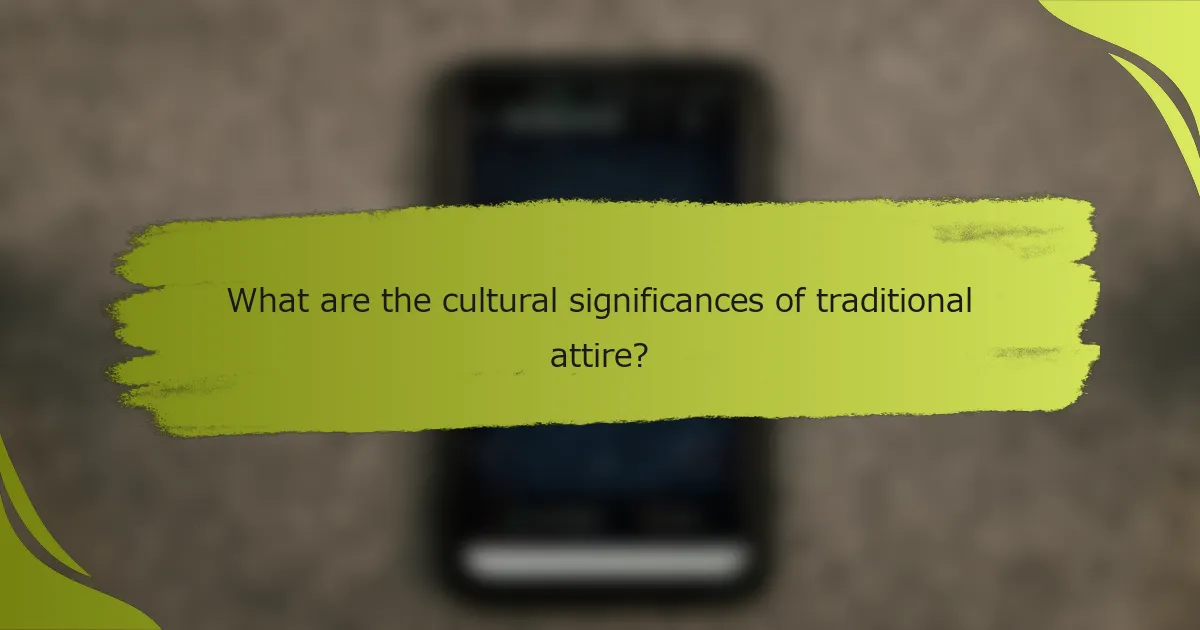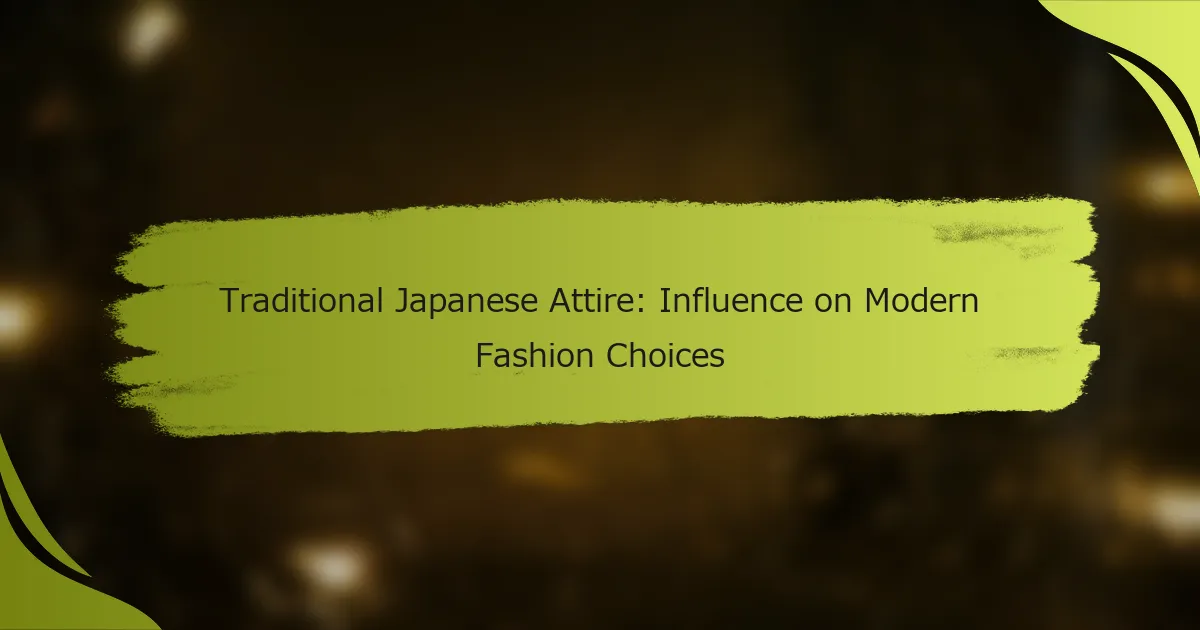伝統的な日本の衣装、特に着物は、現代のファッションに大きな影響を与えています。この影響は、カジュアルウェアからハイファッションに至るまで、文化的要素を融合させたデザインに見られ、伝統と現代性のユニークな融合を示しています。

How does traditional Japanese attire influence modern fashion in Japan?
Traditional Japanese attire, particularly the kimono, significantly influences modern fashion in Japan by inspiring contemporary designs and blending cultural elements. This influence is evident in various aspects of clothing, from casual wear to high fashion, showcasing a unique fusion of heritage and modernity.
Kimono-inspired designs
Many modern fashion designers draw inspiration from the kimono, incorporating its silhouette and patterns into their collections. This can be seen in garments that feature wide sleeves, wrap styles, and intricate motifs reminiscent of traditional kimono designs. Such pieces often appeal to consumers looking for a blend of tradition and contemporary aesthetics.
For instance, brands may create dresses or jackets that mimic the kimono’s structure while using modern materials, making them suitable for everyday wear. This approach allows individuals to express their cultural identity while staying fashionable.
Fusion of Western and Japanese styles
The fusion of Western and Japanese styles has become a hallmark of modern fashion in Japan, where designers often mix elements from both cultures. This blend can result in unique pieces that maintain the elegance of traditional attire while incorporating Western trends, such as streetwear or minimalist aesthetics.
Examples include combining kimono fabrics with Western cuts or layering traditional garments with contemporary pieces, creating a versatile wardrobe that appeals to a broad audience. This approach not only respects cultural heritage but also promotes innovation in fashion.
Use of traditional fabrics
Traditional fabrics, such as silk and cotton used in kimonos, are increasingly being utilized in modern clothing. Designers often select these materials for their quality and cultural significance, enhancing the appeal of contemporary garments. Fabrics like chirimen (crepe) or kasuri (ikat) are particularly popular for their unique textures and patterns.
Incorporating these fabrics into modern designs not only preserves traditional craftsmanship but also offers consumers a tangible connection to Japan’s rich textile history. This practice encourages sustainability by promoting the use of local materials and artisanal techniques.
Contemporary streetwear adaptations
Contemporary streetwear in Japan often features adaptations of traditional attire, making it accessible and relevant to younger generations. Designers create casual clothing that incorporates kimono elements, such as oversized fits and bold prints, appealing to the urban youth culture.
Popular items include kimono-style jackets paired with jeans or sneakers, allowing wearers to express their individuality while honoring their cultural roots. This trend reflects a broader movement where traditional attire is reimagined to fit modern lifestyles, ensuring its relevance in today’s fashion landscape.

What are the key elements of traditional Japanese attire?
Traditional Japanese attire is characterized by its unique garments, each with distinct cultural significance and design. Key elements include the kimono, hakama, yukata, and obi, which reflect Japan’s rich history and craftsmanship.
Kimono
The kimono is perhaps the most iconic piece of traditional Japanese clothing, known for its T-shaped silhouette and intricate designs. Typically made from silk, it features elaborate patterns that can signify the wearer’s age, marital status, and the season.
When selecting a kimono, consider the occasion, as formal events require more elaborate styles, while casual outings may allow for simpler designs. Accessories like the obi and footwear also play a crucial role in completing the look.
Hakama
Hakama are pleated trousers worn over the kimono, traditionally associated with formal occasions and martial arts. They come in various styles, including the more formal “hankama” and the casual “yukata hakama,” which is lighter and often worn in summer.
Choosing the right hakama involves understanding the event’s formality. For instance, darker colors are typically reserved for formal ceremonies, while lighter shades are more appropriate for casual settings.
Yukata
The yukata is a lightweight cotton garment, ideal for summer festivals and casual outings. It is simpler than the kimono and often features vibrant colors and patterns, making it a popular choice for warm weather.
When wearing a yukata, it is essential to select appropriate accessories, such as a casual obi and traditional sandals. This attire is often worn during summer festivals, enhancing the festive atmosphere.
Obi
The obi is a wide belt that secures the kimono or yukata, serving both functional and decorative purposes. It comes in various styles, from the formal “obi” used with kimonos to the simpler “haneri” for yukatas.
Choosing the right obi is crucial, as it can dramatically affect the overall appearance. A well-chosen obi complements the garment’s colors and patterns, enhancing the wearer’s aesthetic while ensuring a secure fit.

How do modern designers incorporate traditional elements?
Modern designers often blend traditional Japanese attire elements into contemporary fashion by using patterns, fabrics, and silhouettes inspired by kimonos and other historical garments. This fusion creates unique pieces that honor cultural heritage while appealing to modern aesthetics.
Fashion collections by Issey Miyake
Issey Miyake is renowned for integrating traditional Japanese aesthetics into his fashion collections. His designs often feature innovative pleating techniques that echo the flowing lines of kimonos, allowing for both movement and structure. Collections like “Pleats Please” showcase how traditional forms can be reinterpreted for everyday wear.
Collaboration with artisans
Many modern designers collaborate with traditional artisans to preserve and promote Japanese craftsmanship. These partnerships often result in limited-edition pieces that highlight techniques such as hand-weaving and embroidery, ensuring that the skills of artisans are passed down through generations. Such collaborations not only enhance the uniqueness of the designs but also support local economies.
Use of traditional dyeing techniques
Traditional dyeing techniques, such as shibori and indigo dyeing, are increasingly used in contemporary fashion to create distinctive textiles. These methods produce rich, varied colors and patterns that reflect Japan’s cultural heritage. Designers often incorporate these techniques into modern silhouettes, offering consumers a blend of tradition and innovation.

What are the cultural significances of traditional attire?
Traditional attire in Japan holds deep cultural significance, reflecting the country’s history, values, and social structures. These garments, such as kimonos, are not just clothing but symbols of identity and heritage.
Symbol of heritage
Traditional attire serves as a powerful symbol of Japan’s rich heritage. Each design, color, and fabric choice often tells a story about regional history and cultural practices. For instance, the use of specific patterns can indicate the wearer’s family lineage or the region they come from.
Many families pass down traditional garments through generations, reinforcing a sense of belonging and continuity. Wearing these clothes during special occasions helps individuals connect with their ancestry and cultural roots.
Role in ceremonies
In Japan, traditional attire plays a crucial role in various ceremonies, including weddings, tea ceremonies, and festivals. For example, brides often wear elaborate kimonos adorned with intricate designs, symbolizing purity and elegance. Such garments are typically chosen to reflect the significance of the occasion.
During festivals, participants don traditional clothing to honor their cultural heritage and celebrate community bonds. This practice not only preserves traditions but also fosters a sense of unity among participants.
Representation of social status
Traditional attire can also signify social status within Japanese culture. Historically, the quality of fabric, the complexity of designs, and the colors used in garments indicated the wearer’s social standing. For instance, only the aristocracy could wear certain colors or styles, such as the vibrant red and gold kimonos.
Today, while the strict social hierarchies have relaxed, traditional attire still reflects personal identity and status. People may choose more elaborate designs for significant life events, showcasing their achievements and social connections.

How can individuals blend traditional and modern styles?
Individuals can blend traditional and modern styles by incorporating elements of traditional Japanese attire, such as kimono fabrics or patterns, into contemporary clothing. This fusion allows for personal expression while honoring cultural heritage.
Choosing the Right Fabrics
Selecting fabrics is crucial when blending traditional and modern styles. Consider using silk or cotton with traditional patterns like asanoha or seigaiha, which can add a unique touch to modern garments. These fabrics can be used in items like jackets, skirts, or accessories.
When choosing fabrics, aim for quality over quantity. A single piece made from a beautiful traditional fabric can elevate an entire outfit. Look for local artisans or shops that offer authentic materials to ensure authenticity.
Incorporating Traditional Patterns
Integrating traditional patterns into modern clothing can create a striking visual impact. For example, a modern dress with a kimono-style sleeve or a shirt featuring a subtle yukata print can bridge the gap between the two styles. This approach allows for creativity while respecting cultural significance.
Be mindful of the scale of the patterns; larger prints can dominate an outfit, while smaller patterns can serve as accents. Mixing patterns can also work, but ensure they complement each other to avoid a chaotic look.
Accessorizing Thoughtfully
Accessories play a vital role in blending traditional and modern styles. Items like obi belts, kanzashi hairpins, or even a simple furoshiki can enhance a contemporary outfit. These accessories not only add flair but also serve as conversation starters about cultural heritage.
When accessorizing, choose pieces that resonate with your personal style. Avoid overloading on traditional items; instead, select one or two key accessories to maintain balance in your outfit.
